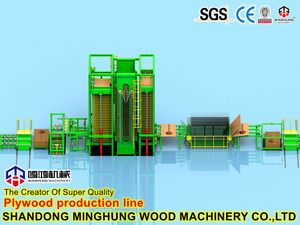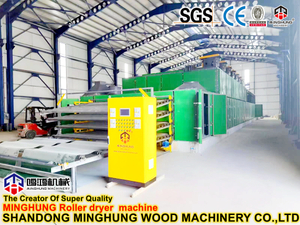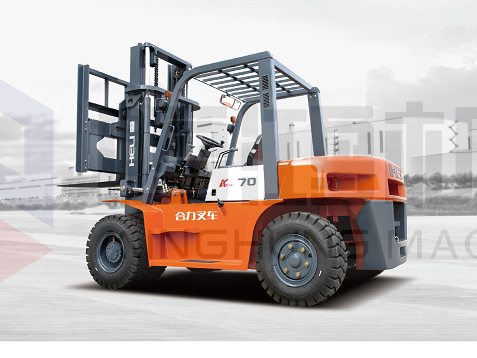
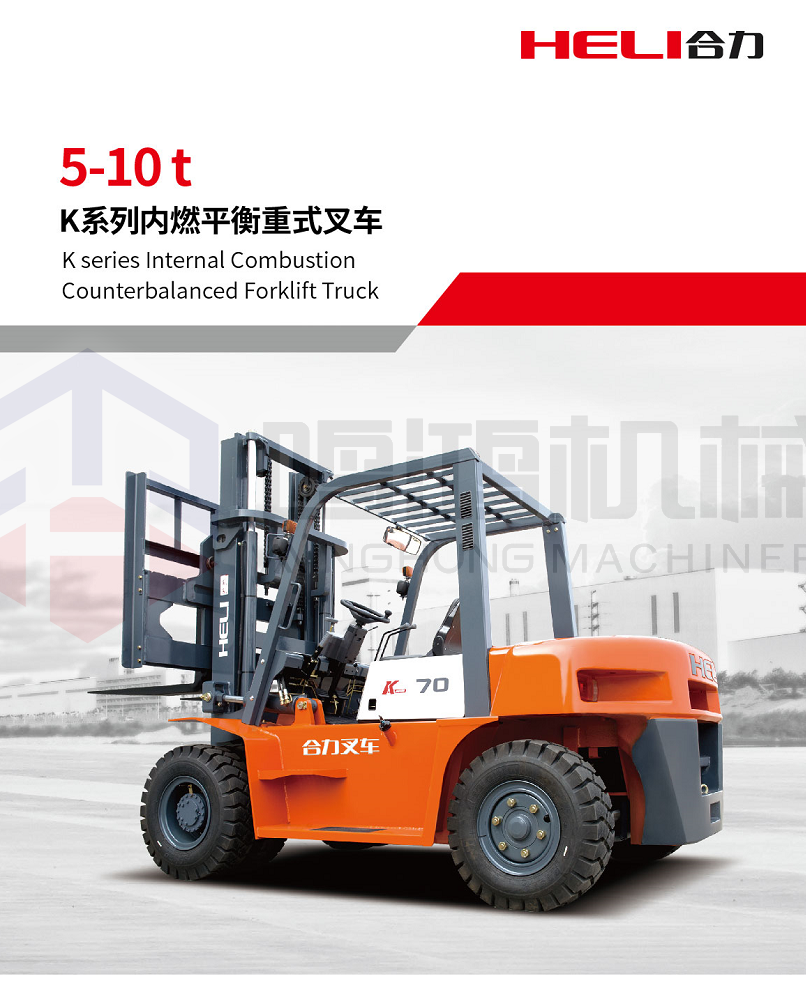
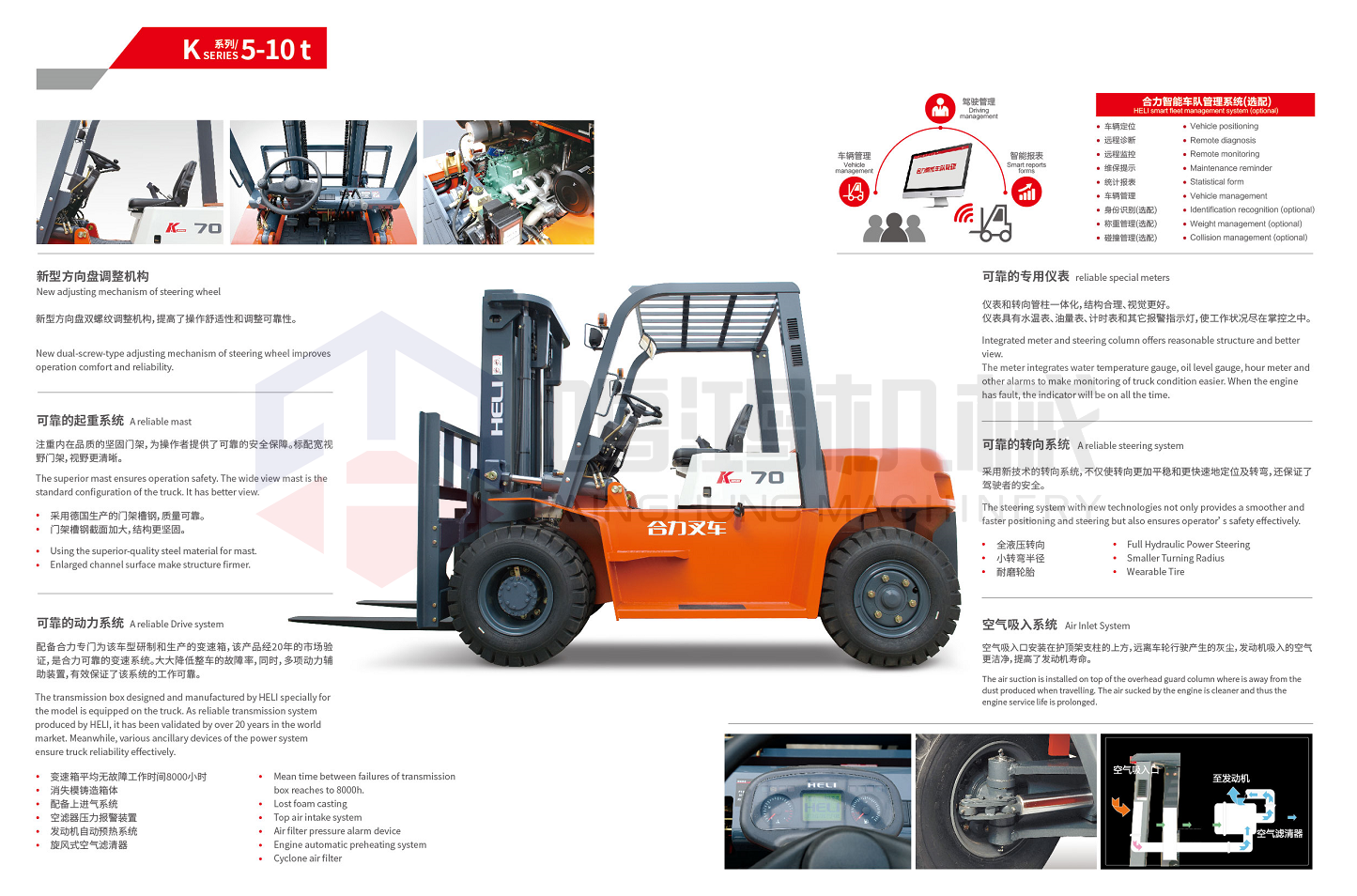
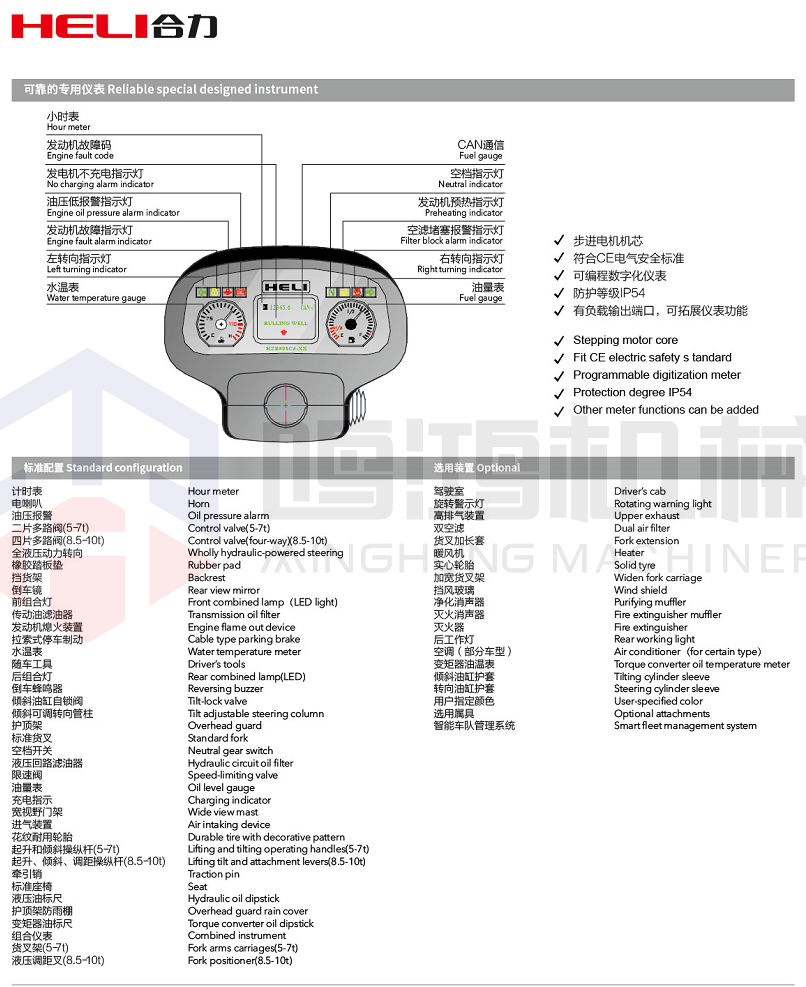 Forklift is an industrial handling vehicle, which refers to various wheeled handling vehicles for loading and unloading, stacking and short-distance transportation of palletized goods. The International Organization for Standardization ISO/TC110 is called Industrial Vehicles. It is often used for the transportation of large objects in storage, and is usually driven by fuel engines or batteries.
Forklift is an industrial handling vehicle, which refers to various wheeled handling vehicles for loading and unloading, stacking and short-distance transportation of palletized goods. The International Organization for Standardization ISO/TC110 is called Industrial Vehicles. It is often used for the transportation of large objects in storage, and is usually driven by fuel engines or batteries.
The technical parameters of the forklift are used to indicate the structural characteristics and working performance of the forklift. The main technical parameters are: rated lifting weight, load center distance, maximum lifting height, gantry inclination, maximum travel speed, minimum turning radius, minimum ground clearance, wheelbase, wheelbase, etc.
Editing of technical parameters
1. Rated lifting capacity: The rated lifting capacity of a forklift refers to the maximum weight of the goods that can be lifted when the distance from the center of gravity of the goods to the front wall of the fork is not greater than the distance between the load centers, expressed in T (tons). When the center of gravity of the goods on the fork exceeds the specified load center distance, the lifting capacity should be reduced accordingly due to the limitation of the longitudinal stability of the forklift.
2. Load center distance: Load center distance refers to the horizontal distance T from the center of gravity to the front wall of the vertical section of the fork when a standard cargo is placed on the fork, expressed in mm (millimeters). For 1T to 4T forklifts, the specified load center distance is 500mm.
3. Maximum lifting height: The maximum lifting height refers to the vertical distance between the upper surface of the horizontal section of the fork and the horizontal ground where the forklift is located when the forklift is fully loaded and the goods are raised to the highest position on a flat and solid ground.
4. The gantry inclination: the gantry inclination refers to the maximum inclination angle of the gantry forward or backward relative to its vertical position when the unloaded forklift is on a flat and solid ground. The function of the forward inclination angle is to facilitate fork picking and unloading of goods; the function of the rear inclination angle is to prevent the goods from slipping off the fork when the forklift is running with goods. Generally, the forward inclination angle of the forklift is 3°~6°, and the rear inclination angle is 10°~12°.
5. Maximum lifting speed: The maximum lifting speed of the forklift usually refers to the maximum speed at which the goods are lifted when the forklift is fully loaded, expressed in m/min (meters per minute). Increasing the maximum lifting speed can improve work efficiency, but if the lifting speed is too fast, cargo damage and machine damage accidents are likely to occur. The maximum lifting speed of domestic forklifts has been increased to 20m/min.
6. Maximum travel speed: Increasing the travel speed has a great impact on improving the working efficiency of the forklift. For an internal combustion forklift with a lifting capacity of 1T, the minimum travel speed when fully loaded is not less than 17m/min.
7. Minimum turning radius: When the forklift is running at low speed with no load and turning with full steering wheel, the minimum distance from the outermost and innermost of the car body to the turning center is called outside the minimum outer turning radius Rmin and within the minimum inner turning radius rmin respectively. . The smaller the minimum outer turning radius, the smaller the ground area required for the forklift to turn, and the better the maneuverability.
8. Minimum ground clearance: The minimum ground clearance refers to the distance from the fixed lowest point on the vehicle body to the ground other than the wheels, which indicates the ability of the forklift to cross the raised obstacles on the ground without collision. The greater the minimum ground clearance, the higher the forklift's passability.
9. Wheelbase and wheelbase: The wheelbase of the forklift refers to the horizontal distance between the center lines of the front and rear axles of the forklift. Wheelbase refers to the distance between the centers of the left and right wheels on the same axle. Increasing the wheelbase is beneficial to the longitudinal stability of the forklift, but increases the length of the body and the minimum turning radius. Increasing the wheel base is beneficial to the lateral stability of the forklift, but it will increase the overall width of the body and the minimum turning radius.
10. The minimum width of the right-angle aisle: the minimum width of the right-angle aisle refers to the minimum width of the aisle intersecting at a right angle for the forklift to travel back and forth. Expressed in mm. Generally, the smaller the minimum width of the right-angle channel, the better the performance.
11. The minimum width of the stacking channel: the minimum width of the stacking channel is the minimum width of the channel when the forklift is in normal operation.
Scope of application editing broadcast
Industrial handling vehicles are widely used in ports, stations, airports, freight yards, factory workshops, warehouses, distribution centers and distribution centers, etc. The loading and unloading and handling of palletized goods in ship cabins, carriages and containers is a must in pallet transportation and container transportation. Essential equipment.
Forklifts play a very important role in the logistics system of enterprises and are the main force in material handling equipment. Widely used in stations, ports, airports, factories, warehouses and other sectors of the national economy. During World War II, forklifts were developed. China has been manufacturing forklifts since the early 1950s. Especially with the rapid development of China's economy, the material handling of most enterprises has been separated from the original manual handling, and replaced by mechanized handling based on forklifts. Therefore, in the past few years, the demand of China's forklift market has grown at a double-digit rate every year.
There are many brands of forklifts to choose from in the market, the models are complex, and the products themselves have strong technology and are very professional. Therefore, the choice of models and suppliers are often faced by many purchasing companies. This article focuses on the introduction from the aspects of model selection, brand selection, performance evaluation standards and the contribution rate of my country's forklifts to overseas markets.
Operation certificate
Article 38 of the Regulations on Safety Supervision of Special Equipment: "The operators of boilers, pressure vessels, elevators, hoisting machinery, passenger ropeways, large amusement facilities, and special motor vehicles in the field (factory) and their relevant managers shall Only after passing the examination of the special equipment safety supervision and management department in accordance with the relevant provisions of the state, and obtaining the special operator certificate in the unified format of the state, can they engage in the corresponding operation or management work.”
"Decision of the State Council on Establishing Administrative Licensing for Administrative Examination and Approval Items that Really Need to Be Retained" (Order No. 412 of the State Council) Catalogue No. 249: Design, installation, use, inspection units and personnel qualifications of pressure pipelines.
Basic conditions
1. Those who are engaged in the forklift certificate special equipment operator certificate examination must be over 18 years old;
2. Be healthy and meet the special requirements of the type of forklift operation you are applying for;
3. Have the education level suitable for the type of operation of the special equipment for the application for the forklift license;
4. Have work experience suitable for the type of operation of special equipment for the application for forklift license;
5. Possess the corresponding safety technical knowledge and skills for special equipment operators with forklift licenses;
6. Comply with other requirements stipulated in the safety technical specifications for special equipment operators with forklift licenses.
The specific conditions shall be implemented in accordance with the provisions of the relevant safety technical specifications. Persons who apply for the "Special Equipment Operator Certificate" shall first register for the examination with the special equipment operator examination institution, and shall be issued a special equipment operator certificate after passing the examination.
Special term editing broadcast
1. Rated lifting weight: refers to the maximum weight that the forklift should be able to lift when the center of gravity of the goods on the fork is at the specified load center distance. (unit kg)
2. Load center distance: refers to the specified distance from the center of gravity of the cargo to the front end of the vertical section of the fork.
National regulations: 400mm when Q (representing load) < 1t; 500mm when 1 ≤ Q < 5;
600mm when 5 ≤ Q ≤ 10; 900mm when 12 ≤ Q ≤ 18; 1250mm when 20 ≤ Q ≤ 42.
3. Maximum lifting height: Refers to the maximum height that the fork can lift when the forklift is on a level and solid ground, and the gantry is placed vertically and bears the rated lifting capacity of the goods - the vertical distance from the upper plane of the fork to the ground.
4. Free lifting height: refers to the maximum height that the fork can leave the ground under the condition that the height of the mast remains unchanged.
5. Minimum turning radius: refers to the distance between the instantaneous center of the forklift and the outermost side of the vehicle body when the steering wheel of the forklift is turned to the limit position and the turning movement is performed at the lowest stable speed.
6. Mast inclination angle: refers to the maximum angle that the gantry of the unloaded forklift can tilt forward or backward from its vertical position.
7. Wheelbase: The vertical distance from the center of the front axle to the center of the rear axle [1].
Model classification editing broadcast
Forklifts can generally be divided into three categories: internal combustion forklifts, electric forklifts, and storage forklifts.
Internal combustion
Internal combustion forklifts are further divided into ordinary internal combustion forklifts, heavy-duty forklifts, container forklifts and side forklifts.
① Ordinary internal combustion forklift
Generally, diesel, gasoline, liquefied petroleum gas or natural gas engines are used as power, with a load capacity of 1.2 to 8.0 tons, and a working channel width of 3.5 to 5.0 meters. Places with no special requirements for emissions and noise. Due to the convenience of refueling, it can realize continuous operation for a long time, and it can work in harsh environments (such as rainy days).
② Heavy Forklift
Diesel engines are used as power, and the carrying capacity is 10.0 to 52.0 tons. It is generally used for outdoor operations in the wharf, steel and other industries with heavy cargo.
③ Container forklift
Diesel engines are used as power, and the carrying capacity is 8.0 to 45.0 tons. It is generally divided into empty container stackers, heavy container stackers and container reach stackers. For container handling, such as container yard or port terminal operations.
④ Side forklift
The diesel engine is used as the power, and the carrying capacity is 3.0 to 6.0 tons. In the case of no turning, it has the ability to directly fork the goods from the side, so it is mainly used to fork long-shaped goods, such as wooden bars, steel bars, etc.
electric
Powered by electric motor and battery as energy. The carrying capacity is 1.0 to 8.0 tons, and the width of the working channel is generally 3.5 to 5.0 meters. Because there is no pollution and low noise, it is widely used in indoor operation and other working conditions with high environmental requirements, such as medicine, food and other industries. With the emphasis on environmental protection, electric forklifts are gradually replacing internal combustion forklifts. Since each set of batteries generally needs to be charged after about 8 hours of work, backup batteries are required for multi-shift working conditions.
Warehousing
Warehouse forklifts are mainly forklifts designed for handling goods in warehouses. Except for a few storage forklifts (such as manual pallet forklifts) that are driven by manpower, others are driven by electric motors, which are widely used in the storage industry because of their compact body, flexible movement, light weight and good environmental performance. When working in multiple shifts, motor-driven storage forklifts require backup batteries.
Van
The carrying capacity is 1.6 to 3.0 tons, the width of the working channel is generally 2.3 to 2.8 meters, and the lifting height of the fork is generally about 210 mm. It is mainly used for horizontal handling and cargo loading and unloading in the warehouse. There are three operating modes, such as walking, standing and sitting, which can be selected according to efficiency requirements.
stacker
Electric pallet stackers are divided into two types: full electric pallet stackers and semi-electric pallet stackers. As the name suggests, the former is for driving, and the lifting is electrically controlled, which is more labor-saving. The latter requires manual pulling or pushing of the forklift, and the lifting is electric.
The carrying capacity is 1.0 to 2.5 tons, and the width of the working channel is generally 2.3 to 2.8 meters. It is structurally more gantry than the electric pallet handling forklift. The lifting height of the fork is generally within 4.8 meters. loading and unloading.
Reach car
The carrying capacity is 1.0-2.5 tons. The gantry can be moved forward or retracted as a whole. The width of the working channel is generally 2.7-3.2 meters when retracted, and the maximum lifting height can reach about 11 meters. cargo work.
electric picking cart
In some working conditions (such as the distribution center of the supermarket), it is not necessary to ship the entire pallet, but to select various varieties of goods according to the order to form a pallet. This link is called picking. According to the height of picking goods, electric picking forklifts can be divided into low-level picking forklifts (within 2.5 meters) and medium-high picking forklifts (up to 10 meters).
Carrying capacity 2.0-2.5 tons (low position), 1.0-1.2 tons (medium-high position, with cab lift).
Low driving three-way stacker forklift
Usually equipped with a three-way stacking head, the forklift does not need to be turned, and the fork can be rotated to realize the stacking and picking of goods on both sides. The width of the aisle is 1.5 to 2.0 meters, and the lifting height can reach 12 meters. The cab of the forklift cannot always be lifted on the ground. Considering the limitation of the operating field of view, it is mainly used for the lifting height of less than 6 meters.
High drive three-way stacker forklift
Similar to the low-drive three-way stacker forklift, the high-drive three-way stacker forklift is also equipped with a three-way stacking head, the aisle width is 1.5 to 2.0 meters, and the lifting height can reach 14.5 meters. The cab can be raised, and the driver can clearly observe the goods at any height and can also carry out picking operations. The high-position driving three-way stacker forklift is superior in efficiency and various performances to the low-position driving three-way stacker forklift, so this model has gradually replaced the low-position driving three-way stacker forklift.
Electric tractor
Electric tractor (trailer)
The tractor is driven by an electric motor, and uses its towing capacity (3.0 to 25 tons) to pull several trolleys loaded with goods behind. The main categories are: electric tractors for airport logistics, electric tractors for workshops, small electric tractors, electric three-wheel tractors, which are often used for the transportation of large quantities of goods within or between workshops, such as the transportation of automobile manufacturing warehouses to assembly lines , Luggage transportation at the airport.
Model and configuration editing broadcast
The choice of model and configuration generally starts from the following aspects:
Job function
The basic operation functions of forklifts are divided into horizontal handling, stacking/picking, loading/unloading, and picking. According to the operation function to be achieved by the enterprise, it can be preliminarily determined from the models introduced above. In addition, special operation functions will affect the specific configuration of the forklift, such as paper rolls, molten iron, etc., and the forklift needs to be installed with attachments to complete the special functions.
Work requirements
The operation requirements of forklifts include general requirements such as pallet or cargo specifications, lifting height, working channel width, and grade of grade, etc., and also need to consider operation efficiency (different models have different efficiencies), operation habits (such as habit of driving or standing), etc. aspect requirements.
Working environment
If the goods or warehouse environment that the enterprise needs to transport has environmental protection requirements such as noise or exhaust emission, it should be considered when selecting models and configurations. If it is in a cold storage or in an environment with explosion-proof requirements, the configuration of the forklift should also be a cold storage type or an explosion-proof type. Carefully examine the locations that the forklift needs to pass through during operation, and imagine possible problems, such as whether the door height affects the forklift when entering and leaving the warehouse; when entering and exiting the elevator, the impact of the elevator height and load on the forklift; when working upstairs, the floor load Whether the corresponding requirements are met, etc.
When selecting and determining the configuration, it is necessary to describe the working conditions in detail to the forklift supplier and conduct on-site investigations to ensure that the purchased forklift fully meets the needs of the enterprise. Even after completing the analysis of the above steps, there may still be several models that can meet the above requirements at the same time. At this point, you need to pay attention to the following aspects:
① Different models have different work efficiency, so the number of forklifts and drivers required are also different, which will lead to a series of changes in cost. For details, please refer to the discussion on cost in the performance evaluation section of this article.
② If the forklift works in the warehouse, the width of the aisle required by different models is different, and the lifting capacity is also different, which will bring about changes in the layout of the warehouse, such as changes in the storage capacity of goods.
③ Changes in models and their numbers will have an impact on many aspects such as fleet management.
④ The market ownership of different models is different, and their after-sales support capabilities are also different. For example, the low-position driving three-way stacker forklift and the high-position three-way stacker forklift belong to the series of narrow aisle forklifts, which can be used in very narrow aisles (1.5~ 2.0 meters) to complete the stacking and pickup. However, the cab of the former cannot be raised, so the operating field of vision is poor and the work efficiency is low. Because the latter can completely cover the functions of the former, and its performance is more outstanding, the sales of the latter in Europe is 4 to 5 times higher than that of the former, and it is more than 6 times in China. Therefore, most suppliers focus on the development of high-level driving three-way stacking forklifts, while low-level driving three-way stacking forklifts
Forklifts are only used for small tonnage and low lifting heights (usually within 6 meters). When there are few sales in the market, the number of after-sales engineers, the experience of engineers, the level of spare parts inventory and other service capabilities will be relatively weak.
After a comprehensive assessment of the impact of the above aspects, choose the most reasonable plan.
Brand Choice Editor Broadcast
Initially determine several brands as the scope of consideration, and then comprehensively evaluate. In the primary selection stage, the following aspects are generally used as the primary selection criteria:
1. The product quality and reputation of the brand;
2. What is the after-sales support capability of the brand, and whether there are service outlets at or near the location of the company;
3. The product quality and service of the brand used by the enterprise;
4. The selected brand needs to be consistent with the positioning of the enterprise.
After the primary selection is completed, the comprehensive evaluation of each brand includes brand, product quality, price, service capability, etc.
Many companies have certain misunderstandings when choosing a brand: if they are all imported brand forklifts, the quality is similar, and the price should be close. In fact, this is a common-sense mistake, just like cars, there are many imported brands of cars, the price gap between different brands is also very large, and of course there are differences in performance.
In addition, a forklift is an industrial equipment, and it is one of the goals of the enterprise to ensure the normal operation of the equipment to the greatest extent, and stoppage means loss. Therefore, it is very important to choose a brand with guaranteed after-sales service. China's forklift market is very large, so it has attracted many foreign brand forklift suppliers. However, China has a vast territory and it is difficult to establish a nationwide professional service network without a certain period of time.
Rental Editing Broadcast
Benefits of Forklift Rental:
1. All after-sales services during the lease period are provided by the service provider.
2. Effectively reduce investment in fixed assets.
3. Invest funds in batches to effectively reduce investment costs.
4. Increase the liquidity of corporate funds.
5. The funds are used as operating expenses to save relevant taxes.
6. Avoid the risk of technical obsolescence of equipment.
1. Advantages of leasing
Investing funds in batches can effectively reduce investment costs and effectively reduce investment in fixed assets. Reduce staffing, reduce management costs, and hand over tedious tasks to others. The overall project outsourcing saves management troubles. Seasonal, staged or short-term production volumes require additional forklifts, and it is not necessary to spend funds on temporary needs.
2. Form of lease
Short-term rental: Charges are based on the actual workload of the forklift. The two parties determine the charging standards and terms of service.
Long-term lease: The lease settlement unit is monthly. We only provide forklifts and maintenance required for normal use of forklifts, the rest is the responsibility of the lessee.
Contract business system: We provide forklifts, drivers, fuel, forklift repair and maintenance, etc. Billed by month. There is no need to search for suppliers and negotiate prices many times.
Project contracting: general contracting for warehousing and logistics projects, we will provide project leaders, forklifts, drivers, fuel, handling personnel, etc. to achieve streamlined management of the enterprise.
Purchasing by renting: The brand and model of the forklift are designated by the vehicle user, and our company is responsible for purchasing and then renting it to the vehicle user. Both parties agree on the rent and lease period, maintenance and other related matters. After the lease period expires, the ownership of the forklift will be owned by the lessor.
Repurchase and leaseback: In order to save the maintenance, management and cost of the enterprise, and focus on the core business of the enterprise, the forklift equipment of the enterprise can be repurchased from us after evaluation, and then a more suitable forklift can be leased to realize the technological update of the enterprise and adapt to the enterprise. development needs.
Performance Judgment Editor Broadcast
In the comprehensive evaluation, many companies often cannot make a reasonable judgment on the product quality because they do not understand the professional knowledge and technology of forklift trucks. Generally speaking, the superior performance of high-quality forklifts is often reflected in many aspects such as high efficiency, low cost, high reliability, good ergonomic design and convenient service.
Efficiency doesn't just mean high speed (travel, lift, lower speed), it also means that the operator takes a short time to complete a work cycle and can maintain this efficiency throughout the working time. A number of factors can contribute to increased efficiency:
① The level of speed, such as driving speed, lifting and lowering speed, etc.;
② The application of ergonomic design reduces the number of operations;
③ The accuracy of the operation;
④ Application of ergonomic design to minimize fatigue;
⑤ Good vision;
When a business buys and uses a forklift, the total cost per year includes:
① Purchase cost;
② maintenance cost;
③ energy consumption cost;
④ Labor cost.
Purchasing costs will be spread over the life of the forklift. Therefore, high-priced forklifts will reduce the purchase cost due to their longer life.
Actual repair costs are not only related to the cost of repairing parts, but also to failure rates or downtime. Therefore, a high-quality forklift has lower maintenance costs due to its lower failure rate.
The cost of energy consumption will vary with forklifts with different powertrains, such as electricity, diesel, LPG or gasoline.
The labor cost varies with the number of drivers and their total monthly salary, and the number of drivers will be reduced by adopting high-efficiency forklifts.
High security
The safety design of the forklift should be able to fully guarantee the safety of the driver, the goods and the forklift itself. High-quality forklifts are often designed with safety in mind to every detail and every possibility.
ergonomics
Ergonomics is a science that is widely used in product design, especially improving the operating environment. The purpose is to maximize production efficiency by reducing driver fatigue and increasing operator comfort.
In forklift design, ergonomics are reflected in all aspects:
① Reduce the fatigue of the driver during operation: the unique design can reduce the driver's operating actions and make the operation more labor-saving;
② Comfort: The humanized design can keep the driver in a good mood and reduce operating errors;
③ Good vision: Provide a good vision for the forklift operation process, which can not only improve the efficiency, but also ensure the safety of the driver.
easy maintenance
Consider whether the forklift is easy to maintain. All parts should be easily replaced, and the diagnosis and elimination of faults should be fast. The control systems of high-quality forklifts have been modularized and can be directly connected to a laptop computer, using diagnostic programs to quickly find faults or modify parameter settings (such as travel speed).
Before purchasing a forklift, in addition to understanding the price and tonnage of the forklift, an enterprise should also make a purchasing decision based on the specific working conditions and development plan of the enterprise, and comprehensively consider the strength, reputation, service guarantee and other factors of the forklift manufacturer. In addition to providing reliable after-sales service, a strong forklift supplier should have professional knowledge and help customers complete the selection of models and configurations.
CPCD is the model code of a first-generation forklift, just like FD/FG. The first C should be a domestic code, and the latter should indicate that it is an internal combustion engine or a battery. CPCD is a general forklift. C: Forklift; P: Counterweight; C: Diesel engine; D: Transmission mode Automatic gear is marked with D; manual gear has no letter. There are also side forks whose code name is CCCD, etc., and some special forklifts have their own code names.
key parameter
1. Load capacity;
2. Engine brand and model;
3. Electronic control brand model;
4. Several levels of gantry;
5. Attachment: side shifter, holding clip, rotator, ejector, special clip for carton, oil drum clip, etc.;
6. Solid tires, pneumatic tires.



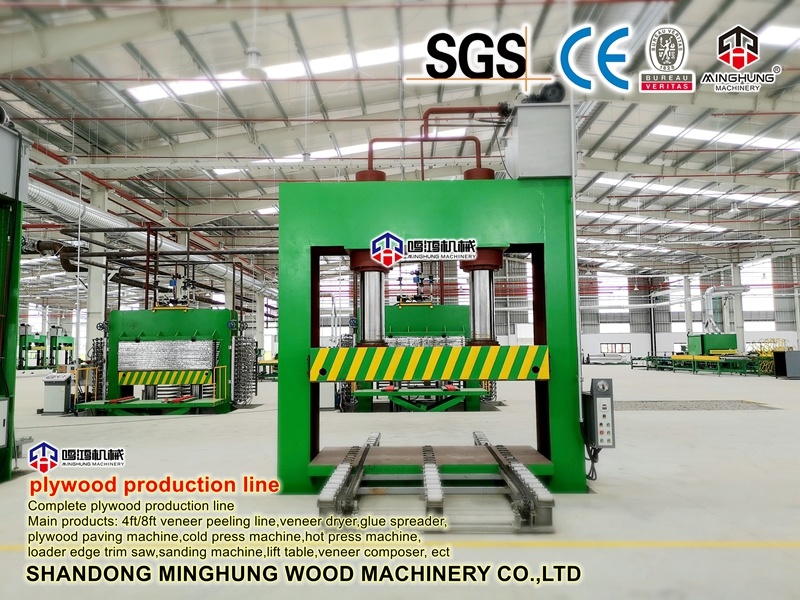

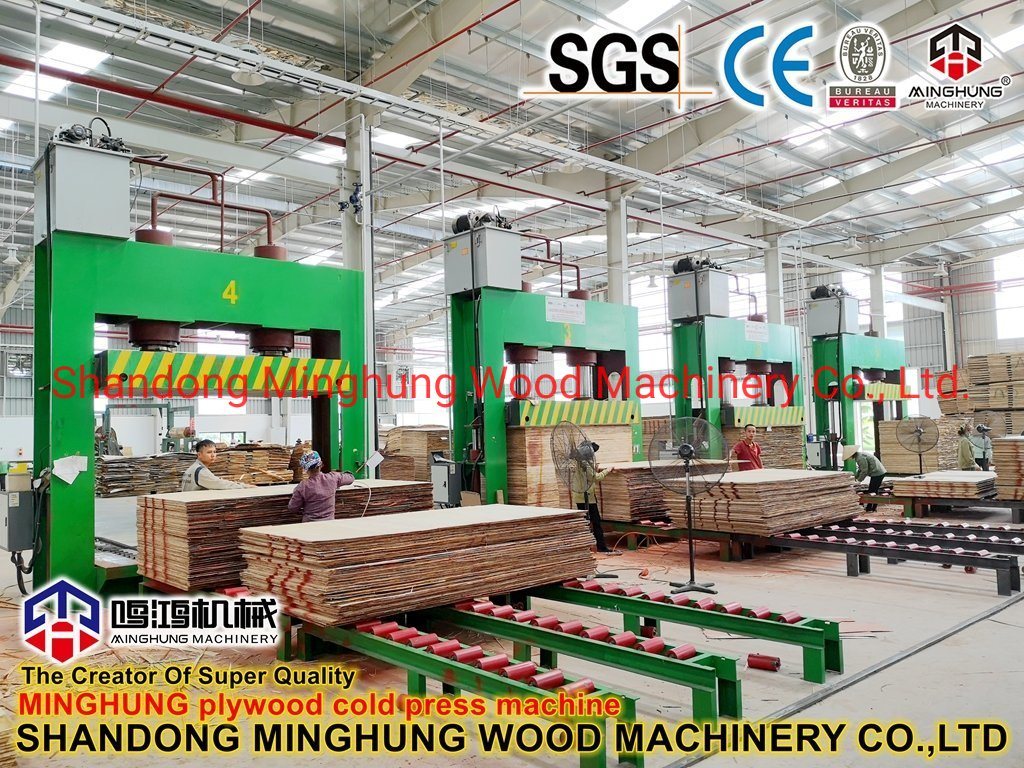
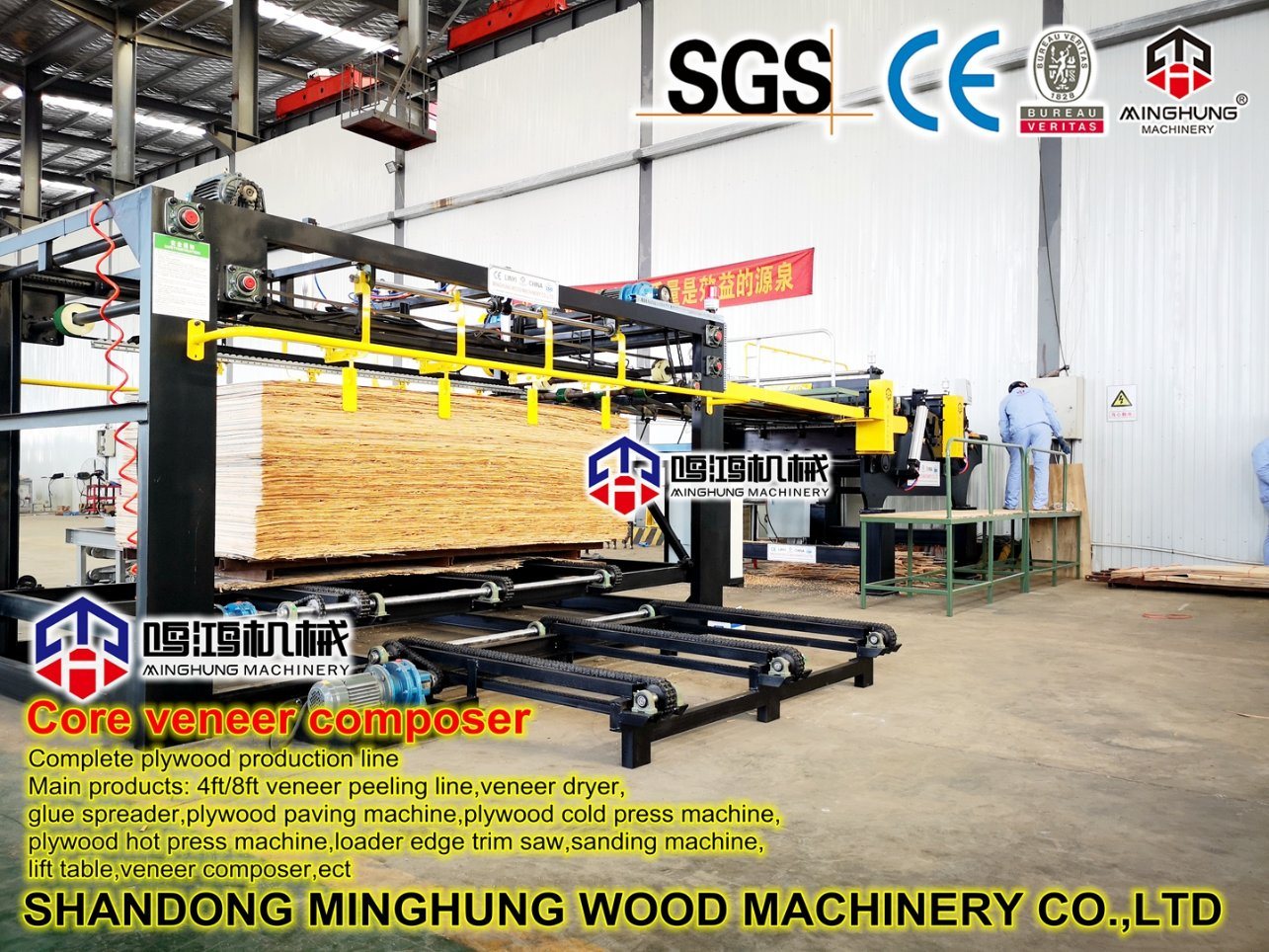
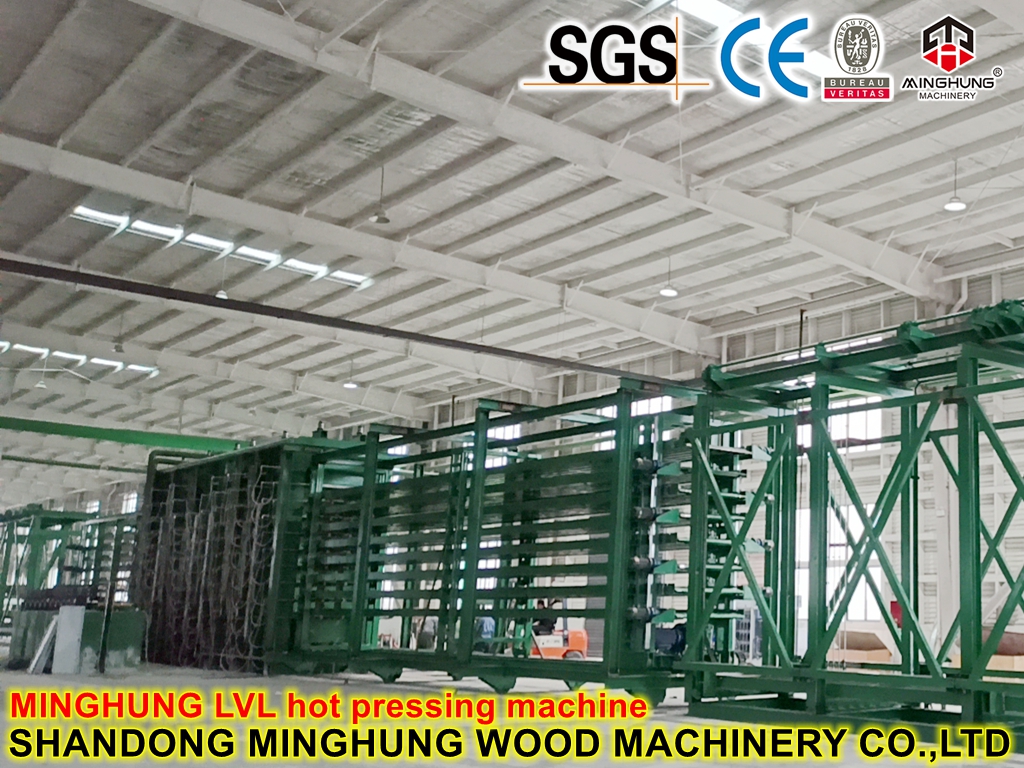

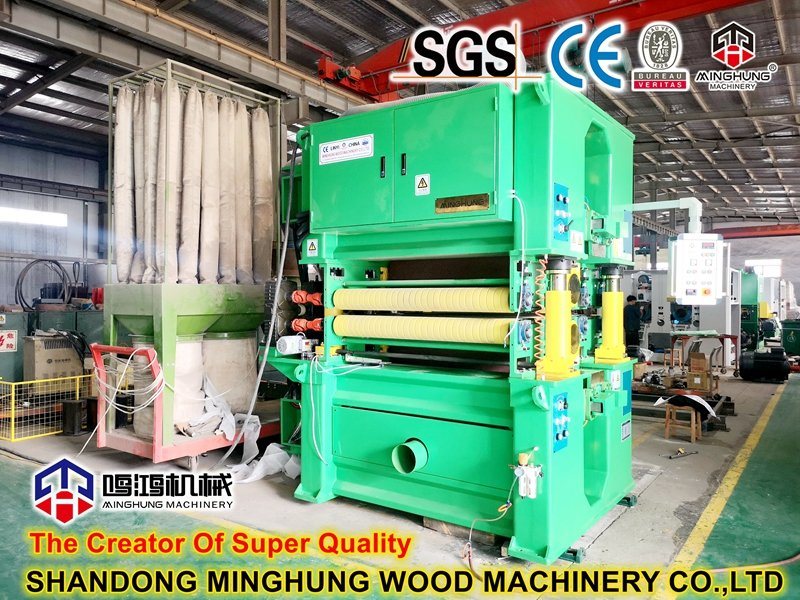
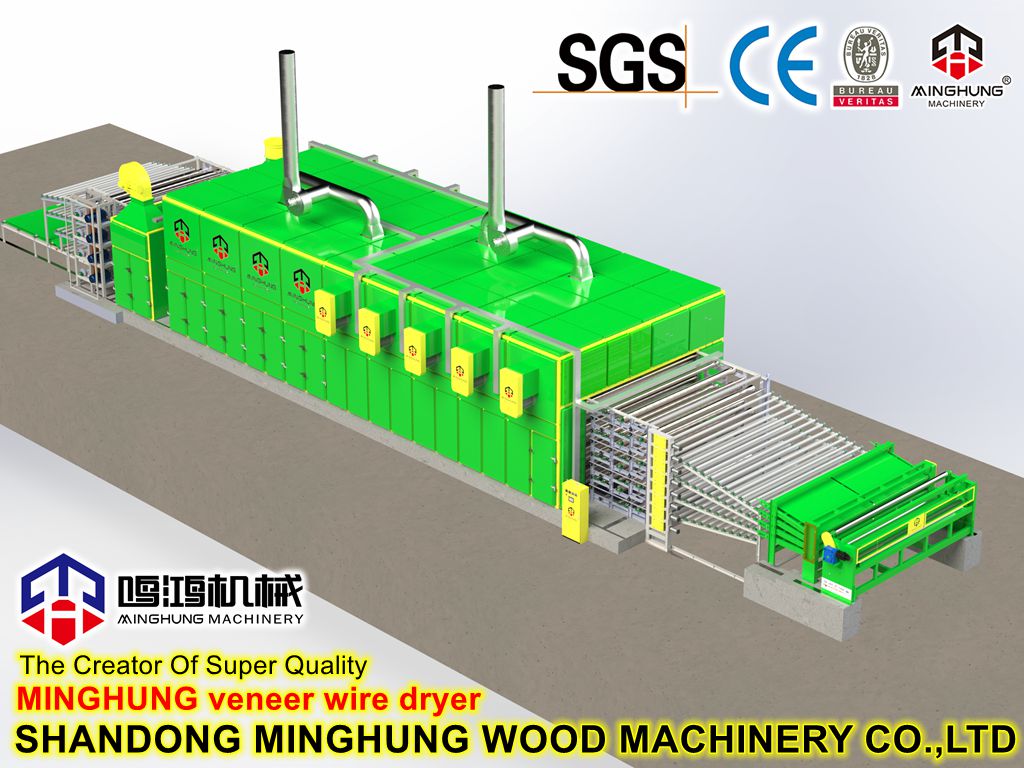
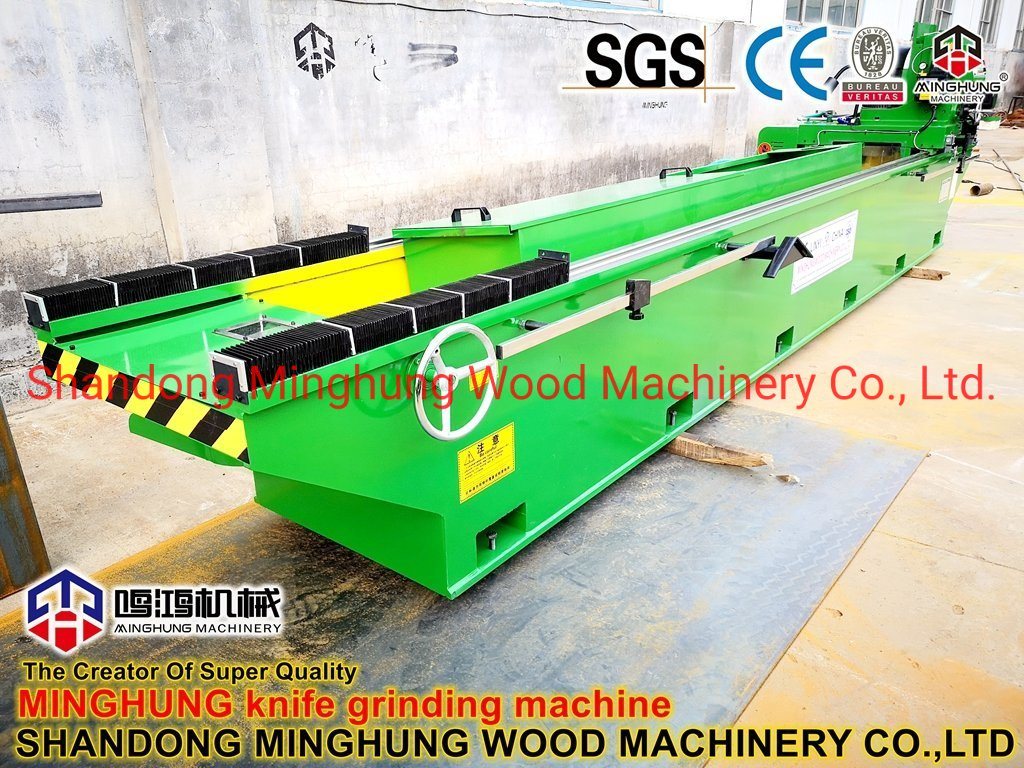
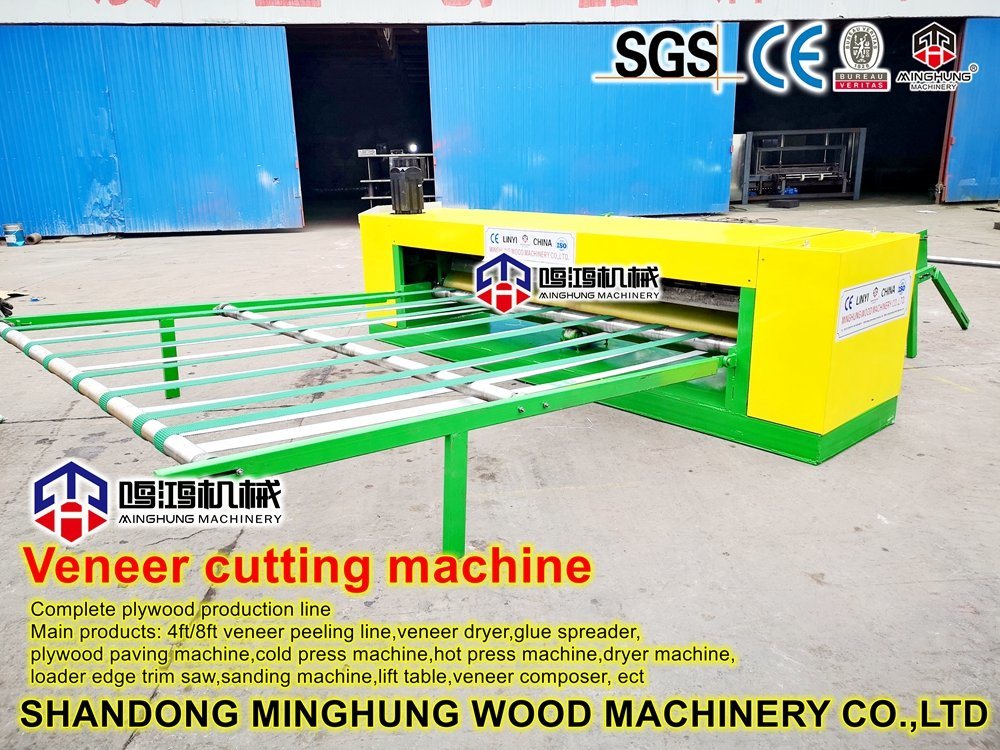
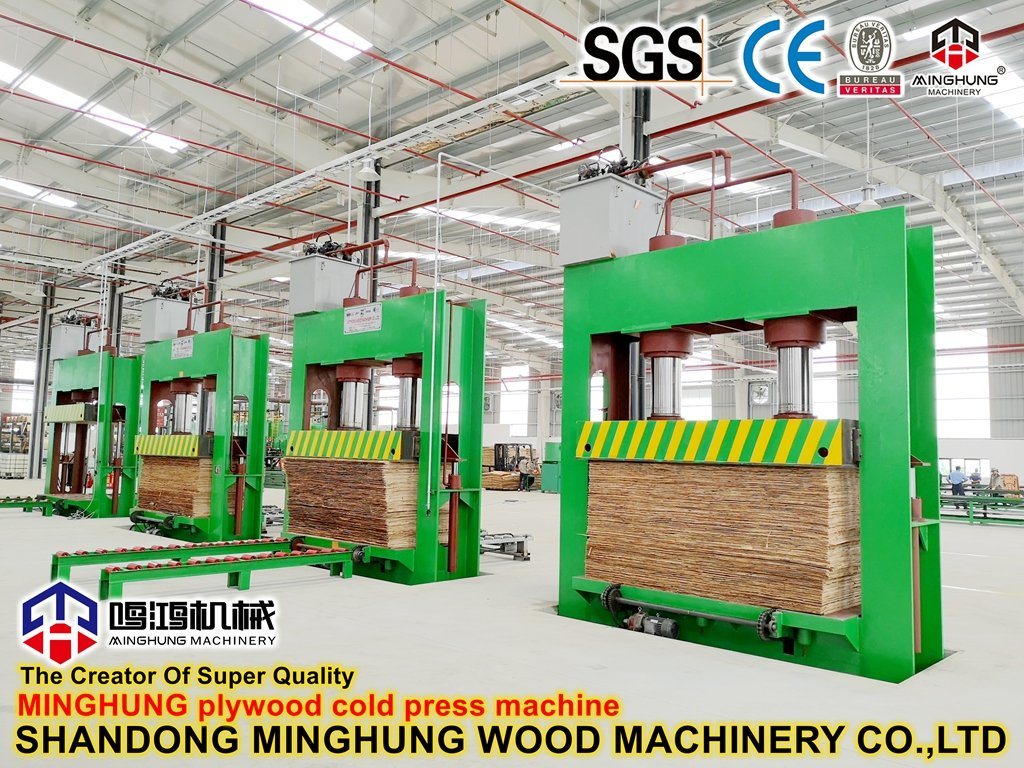
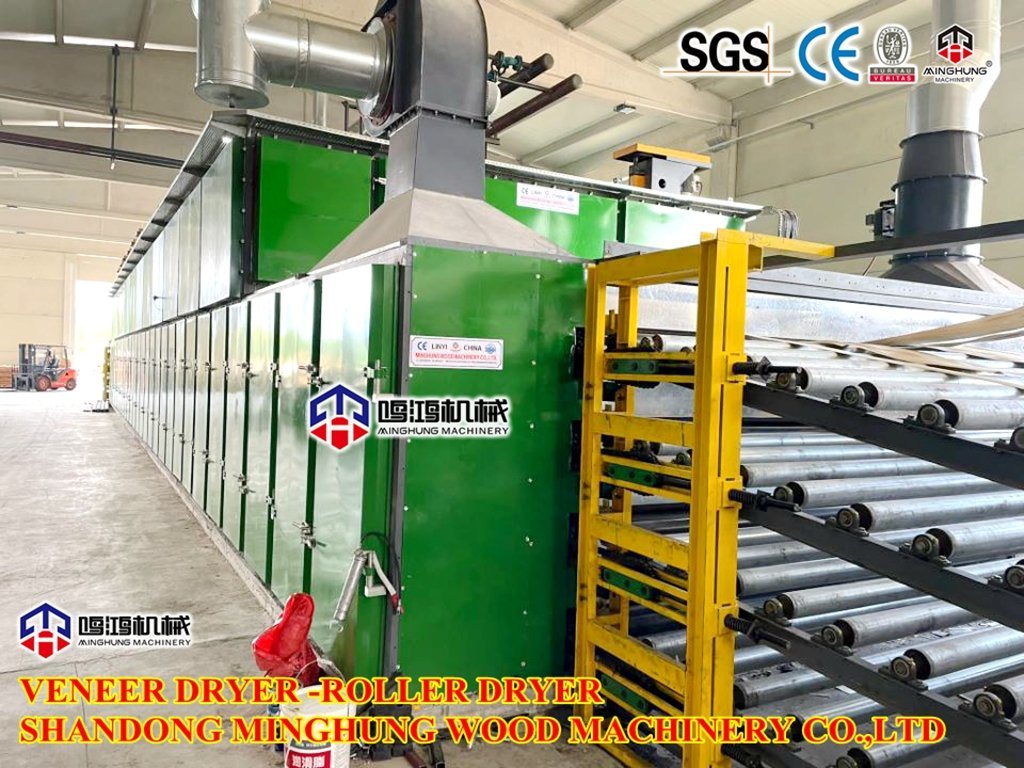
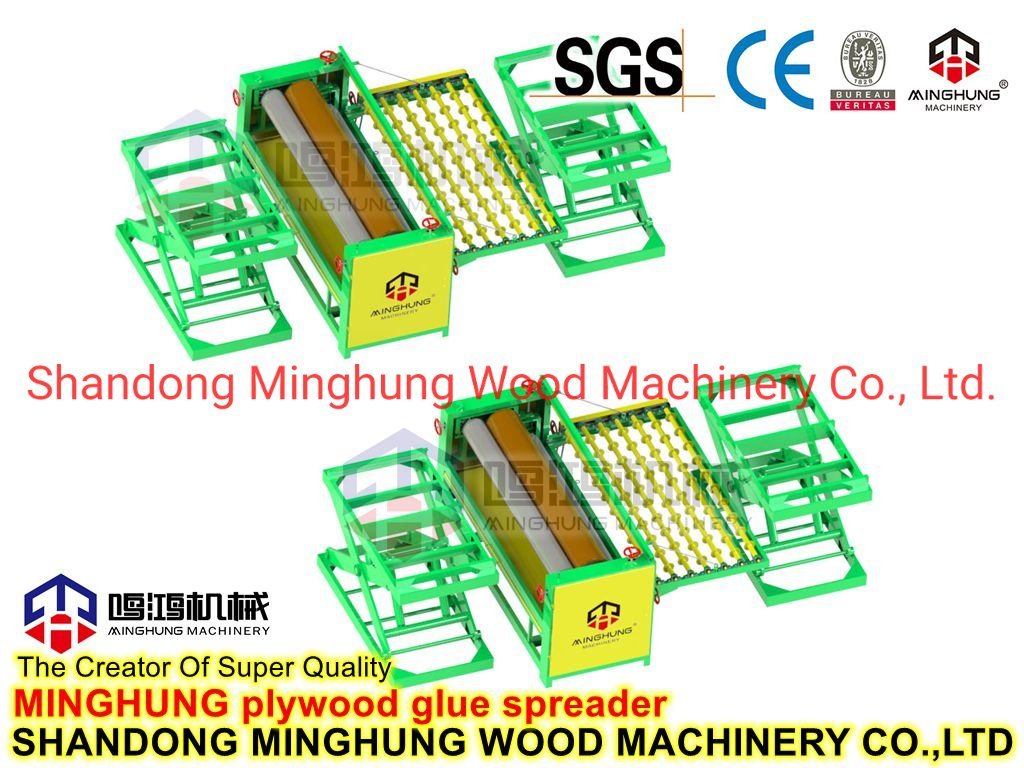






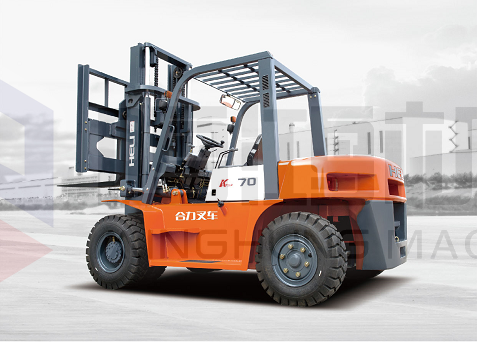





 Forklift is an industrial handling vehicle, which refers to various wheeled handling vehicles for loading and unloading, stacking and short-distance transportation of palletized goods. The International Organization for Standardization ISO/TC110 is called Industrial Vehicles. It is often used for the transportation of large objects in storage, and is usually driven by fuel engines or batteries.
Forklift is an industrial handling vehicle, which refers to various wheeled handling vehicles for loading and unloading, stacking and short-distance transportation of palletized goods. The International Organization for Standardization ISO/TC110 is called Industrial Vehicles. It is often used for the transportation of large objects in storage, and is usually driven by fuel engines or batteries.



